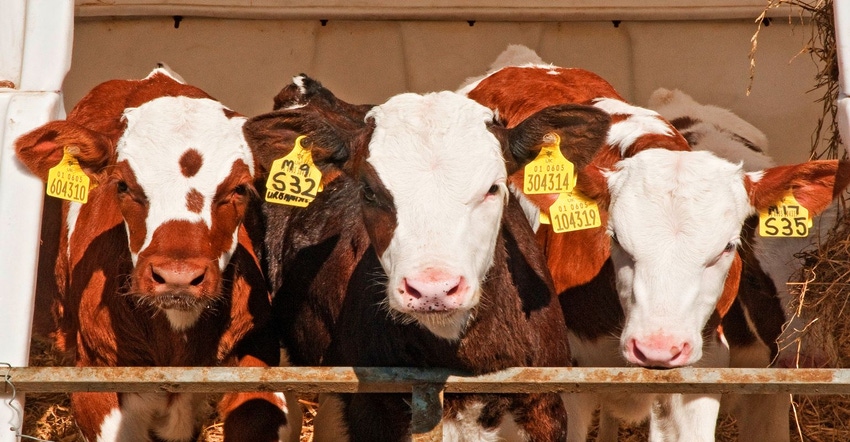Start 2023 right with your cattle record-keeping system
The first step is proper cattle identification.
December 29, 2022

As the year ends, University of Missouri Extension livestock specialist Patrick Davis urges cattle producers to evaluate their record-keeping system to determine if it was successful.
“Record-keeping starts with proper cattle identification,” Davis said. Two nationally known identification systems are the four-digit system and the letter and three-digit system.
The first number of the four-digit system represents the last digit of the calf’s birth year. The other numbers represent the calf’s birth order that year. For example, the 56th calf born in 2023 would be 3056. One problem with this system is the potential for duplication when there are cows in the herd that are 10 or more years old.
“The letter and three-digit system reduces potential cow identification duplication in the herd because it uses a letter to represent the year,” said Davis. The letter represents the year the calf was born and the three digits represent the calf birth order during that year. For example, if L is the letter assigned to 2023, then L056 is the identification number for the 56th calf born in 2023. The letter changes yearly in sequential order, except I, O, Q and V are not used.
“For the identification system to be used properly in record-keeping, the identification markings need to be permanent and easy to read,” said Davis. Suggested calf identification markings include ear tagging, ear tattooing and branding. Since tattooing and branding are permanent, Davis suggests these in addition to ear tagging. Ear tattooing is a little simpler to do and requires less preparation, so it is preferred over branding. For proper record-keeping, Davis suggests that ear tattooing and tagging be done as soon as possible after the calf is born.
“The record-keeping system should evaluate the entire cattle herd’s productivity so it can be useful in determining successes and problems within the cattle operation,” said Davis.
Pay attention to the breeding, calving and weaning seasons.
“Looking at cattle records as they relate to the breeding season is helpful in determining reproductive efficiency,” said Davis. Cattle producers should record the number of bred cows and heifers and compare that to the total number of cows and heifers that were exposed during the breeding season. This determines pregnancy percentage, which indicates the reproductive efficiency of the cattle operation. Davis also suggests cattle producers identify and cull the open cows and heifers so resources can be dedicated to the most productive cows and heifers.
After calving, determine calving percentage by comparing the number of cows with live calves to the number of cows and heifers that were exposed during the previous breeding season. This measurement evaluates calf death loss due to dystocia (calving difficulty), spontaneous abortion or other reproductive health problems. Davis urges producers to cull any cows that lost their calves during this time so resources can be dedicated to productive cows.
“Multiple records and analysis can be used to evaluated cow herd productivity at weaning time,” said Davis. First, look at weaning percentage by comparing the number of weaned calves by the number of animals exposed during the previous breeding season. This evaluates calf death loss from calving to weaning.
There are multiple ways to analyze calf weaning weight as it relates to cattle herd productivity. These include:
• Comparing pounds of weaned calves per cows exposed during the previous breeding season. This measurement ultimately tells cattle producers the productivity of their herds.
• Comparing calf weaning weight to cow body size at weaning. This is an indicator of how productive each cow is, which can be very useful for identifying productive females that should be retained and poor-producing females that should be removed to improve herd productivity.
Contact your local MU Extension livestock specialist for more information on how to use a cow record-keeping system to make your cattle operation successful.
You May Also Like


.png?width=300&auto=webp&quality=80&disable=upscale)
